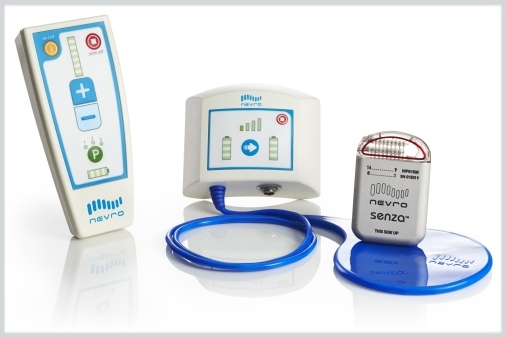The Centers for Disease Control and Prevention’s (CDC) draft update to the Clinical Practice Guideline for Prescribing Opioids addresses the need to tailor opioid-prescribed treatment to individual needs and for clinicians to consider nonopioid therapies.1
The proposed guidelines update previous 2016 CDC guidance, which recommended clinicians use dosage thresholds to treat chronic pain.2 The 2016 guideline resulted in a decline in opioid prescriptions, but also led to patients receiving less medication than needed or abrupt treatment cessation.1,3 Among various outcomes, the reduced access to opioids led to an increase in illicit opioid use.4
The CDC’s draft update outlines an opportunity for clinicians to provide care based on individualized needs. Clinicians are advised to have a conversation with their patient before starting prescription opioids to weigh the benefits vs risks. The CDC also recommends discussing a treatment plan with patients to discontinue opioids if benefits for pain and function ultimately do not outweigh risks.
If opioid treatment must be discontinued, the update guidance recommends nonopioid analgesics for chronic and acute pain, including prescription drugs like gabapentin and over-the-counter drugs like ibuprofen. Nonpharmacologic alternatives include physical therapy, acupuncture, and cognitive behavioral therapy.
The Food and Drug Administration’s (FDA) recent draft guidance also outlines the effort to foster the development of novel nonopioid analgesic drugs, which would provide clinicians with more alternatives to consider for patients with acute and chronic pain.5
The federal government’s guideline updates demonstrate a renewed effort to address the ongoing opioid crisis in the United States. To hear a clinician perspective on the changes, we spoke with David Dickerson, MD, pain medicine specialist and chair of the American Society of Anesthesiologists’s Committee on Pain Medicine.
What were some of the unintended outcomes from the CDC’s 2016 Guideline for Prescribing Opioids for Chronic Pain?
Dr Dickerson: [The] 2016 guidelines were highly restrictive in regards to days of opioids for acute pain and arbitrary thresholds for total morphine milligram equivalents (MME) recommended, [which] failed to highlight the clinical context in which some patients may need increased doses. These were then leveraged as a standard of care and hardwired in to some states’ laws despite that not being the case. This impacted many patients already on opioids and led to [their treatment] being tapered or their medications stopped, as physicians were concerned with complying with the guideline. Guidelines are commonly updated every 5 years or so and evaluate new literature.
The proposed guidelines encourage clinicians to provide personalized care for pain management. How can patients benefit from an individualized approach?
Dr Dickerson: MME limits and days of therapy limits are replaced with recommending discussion of risks and benefits. Acute, subacute, and chronic pain are better delineated as is the recommendation for continuing opioid therapy for patients already receiving such treatment. Physicians still must be responsible for their patient’s care and outcomes despite these pivots. We must all own our outcomes, and opioid dependence without improvement in function or disability is a preventable harm that early consultation with pain specialists can help avoid. Asking for help via expert consultation before starting opioids could help many patients avoid this issue. We need to improve access to this expertise.
How will the individualized approach affect clinical practice?
Dr Dickerson: This document should not open up the door for clinicians to feel like opioid safety or risk has changed, just that the risk mitigation will need to occur from clinical oversight and individual risk assessment. The risk profile of opioids should keep them as nonfirst-line agents for both acute and chronic pain. The ability to make exceptions for challenging cases is what is better enabled in this draft. Those exceptions must still be accompanied by clinical vigilance. As a pain specialist, the initiation and/or escalation of opioids by clinicians who do not fully understand the other nonopioid options for a chronic painful condition is a major concern and remains an issue for the field that neither these [nor] the previous guidelines address.
What are some helpful tips for clinicians to start implementing the CDC’s updated recommendations?
Dr Dickerson: We should first work to ensure this draft is finalized prior to implementation. I am hoping more of the evidence basis for interventional pain care options are included, as the guidelines inform on opioids but may not improve pain care or patient recovery from painful conditions.
The FDA’s draft guidance on nonopioid analgesic drug development could provide a pathway to decrease the nation’s opioid epidemic. What is the significance of the FDA and CDC’s landmark updates? What more could be done?
Dr Dickerson: The draft guidelines focus on nonopioids for acute pain and impart recommendations for developing and studying meaningful nonopioid therapeutics. This is critical work. While persistent opioid use postoperatively may be influenced by such advancement and innovation, the surging opioid epidemic in America is at this time primarily an illicit fentanyl overdose epidemic and will require a myriad of public health and clinical interventions independent of optimizing acute pain care via nonopioid analgesics. While clinical opioid prescribership has reduced significantly, accidental opioid overdose primarily from illicit nonprescription opioid use continued to rise exponentially over these same years, most notably during the SARS-CoV-2 pandemic.
References
1. Dowell D, Ragan KR, Jones CM, Baldwin GT, Chou R. CDC Clinical practice guideline for prescribing opioids–United States, 2022. Centers for Disease Control and Prevention. Accessed February 16, 2022. https://www.regulations.gov/document/CDC-2022-0024-0002
2. Dowell D, Haegerich TM, Chou R. CDC guideline for prescribing opioids for chronic pain — United States, 2016. Centers for Disease Control and Prevention. Accessed February 22, 2022. https://www.cdc.gov/mmwr/volumes/65/rr/rr6501e1.htm
3. Sutherland TN, Wunsch H, Pinto R, et al. Association of the 2016 US Centers for Disease Control and Prevention opioid prescribing guideline with changes in opioid dispensing after surgery. JAMA Netw Open. Published online July 11, 2021. doi:10.1001/jamanetworkopen.2021.11826
4. Coffin PO, Rowe C, Oman N, et al. Illicit opioid use following changes in opioids prescribed for chronic non-cancer pain. PLOS One. Published online May 4, 2020. doi: 10.1371/journal.pone.0232538
5. Development of nonopioid analgesics for acute pain guidance for industry. Food and Drug Administration. Accessed February 16, 2022. https://www.fda.gov/media/156063/download






